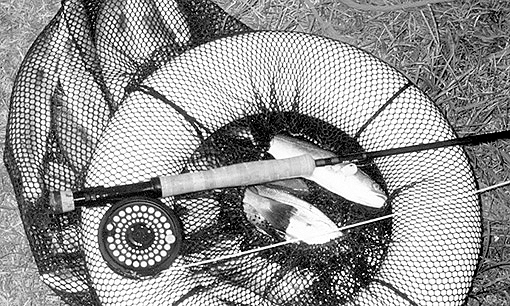
Take a seat on the bench and listen to Grand Isle fisherman Curtis Gisclair. His offshore tactics will assure you of victory.
The dog days of summer are here. How do I know? When you call up your most-dedicated fishing buddies, and they’re home watching reruns of golf tournaments, that’s how I know!
The excuse I often hear is … “it’s too hot” or “fish ain’t biting.”
Actually, August is not any hotter than July was, so I tend to believe the latter.
It is true that in August, water temperatures are at their peak. The warmer the water, the less oxygen it holds, the more sluggish fish become.
One species that continues to be very active, in fact moreso, during August is the sand seatrout, also known as white trout.
Sandies are native to the Gulf of Mexico, and are one of the five most-common species. Part of the reason for their abundance is that they reach maturity at one year, and then spawn continually from March through October, with peaks in March-April and August-September.
According to Jim Ditty, research ecologist with National Marine Fisheries Service in Galveston, if it were not for such fecundity, the sand trout might be endangered.
Ditty, who did his research on sand trout at LSU while a member of the Coastal Fisheries Institute, says that shrimp trawling results in heavy mortality of sand trout. Another study published by IGFA showed that up to 200 million individuals are killed in trawls each year.
Sand trout are the James Dean of coastal fish. They live hard, die young. Average lifespan is 1 to 2 years, occasionally up to 3 years. Fortunately, sandies grow fast — they average about 8 inches at age one, and 11 inches at age two. Seldom do they exceed 13 inches in size.
August and September are months when the largest sandies can be caught, and since it’s a spawning peak, these fish are at their most active. Ice them down quick; otherwise, the flesh becomes a bit mushy. Fried they taste as good or better than their speckled cousins. There are no size or creel limits on sandies.
For fly anglers, sandies are a real late-summer treat. They can be caught in the surf, passes, and open lakes or bays. If you can’t cast like Nick Curcione — in fact, if you can’t cast like St. Nick — you’re still OK with sand trout. On occasion I’ve caught them just jigging the fly near my feet in the surf!
Best flies are Clousers, angels or other minnow patterns. The key is to get the fly to the bottom. When it does, that first strip will be met with violent impact, especially if the sandie is over 10 inches. On a 6-weight rod, it’s loads of fun.
New Products
Orvis and Okuma have again upped the stakes in popularly priced fly tackle. In keeping with our policy of “fair and balanced” product reviews, we examine the good, bad and ugly of each company’s new offering.
The new Orvis Clearwater Classic rods run $165 (3-weight, two-piece) to $210 (8-weight, four-piece). They’re built on the same tapers as their performance TLS rods, offer quality components and come with a 25-year unconditional warranty.
After casting several different models, my impression is that the lighter-weight models are some of the best rods I’ve ever cast — light and definitely not stiff. The 8-weight models, both two- and four-piece, can throw an entire line.
The bad? The saltwater outfits come with the Clearwater reel, suitable only for fresh water. The dealers say they can exchange for a Rocky Mountain or Battenkill, but why make the dealers go through the trouble?
The ugly? The fighting butt on their saltwater models. Orvis, please put that dog to sleep!
Okuma Integrity reels have been the rage after product tests by Fly Fish America magazine rated these die-cast, large-arbor, disk-drag reels as one of their six best. Try this for the price — a measly $85!
Now comes the Okuma Airstream, a graphite version of the Integrity. Same large arbor, same disk drag and an unbelievable price of $35.
The bad? Backing capacity on the larger 79 model is only 100 yards. Good for specks and reds, but forget about using offshore or for bonefish.
The ugly? Like all graphite reels, they are highly susceptible to wear and distortion.
If you’d like us to review a product, send your suggestion by email to catch@laflyfish.com, or by mail to Fly Tackle Review Man, P.O. Box 3761, Baton Rouge, LA 70821.


